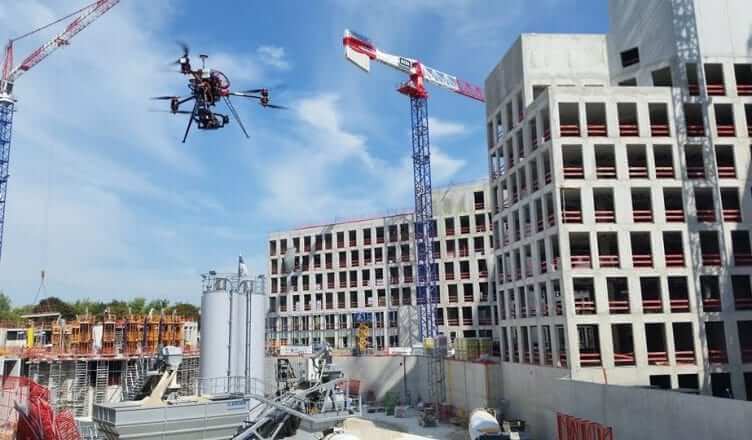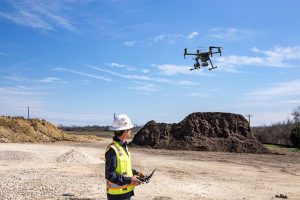The integration of drones in construction industry has ushered in a new era of efficiency, precision, and innovation. As the construction sector continues to evolve, the utilization of unmanned aerial vehicles (UAVs) has become indispensable. This article delves into the multifaceted applications of drones in construction, highlighting their benefits, technological advancements, and future potential.
The Role of Drones in Modern Construction
Drones have transformed various aspects of construction, from site surveys to project management. Their ability to capture high-resolution aerial imagery and data has streamlined processes that were once time-consuming and labor-intensive.
Site Surveys and Mapping
One of the primary applications of drones in construction is site surveying. Traditionally, surveying a construction site involved manual measurements and extensive labor. Drones equipped with advanced imaging technologies such as LiDAR (Light Detection and Ranging) can perform detailed surveys in a fraction of the time. These drones create precise 3D maps and models of the terrain, enabling architects and engineers to plan with greater accuracy.
Progress Monitoring and Reporting
Progress monitoring is crucial for keeping construction projects on schedule and within budget. Drones provide a bird’s-eye view of the construction site, capturing real-time images and videos. This data is essential for generating progress reports, identifying potential issues, and making informed decisions. By automating the monitoring process, drones reduce the need for frequent on-site inspections, thereby saving time and resources.
Safety and Risk Management
Safety is paramount in the construction industry. Drones enhance safety and risk management by providing a comprehensive view of the site, allowing for the identification of hazardous areas and the monitoring of worker compliance with safety protocols. Additionally, drones can access hard-to-reach areas, reducing the need for workers to perform dangerous tasks.
Technological Advancements in Construction Drones
The rapid advancement of drone technology has further solidified their role in the construction industry. Innovations in drone hardware and software have expanded their capabilities and applications.
High-Resolution Imaging and Thermal Cameras
Modern drones are equipped with high-resolution cameras that capture detailed images and videos. These cameras can be combined with thermal imaging to detect heat patterns, which is particularly useful for identifying leaks and insulation issues in buildings. The integration of thermal cameras with drones allows for non-invasive inspections, ensuring the structural integrity of constructions.
LiDAR Technology
LiDAR technology has revolutionized aerial surveying. By emitting laser pulses and measuring their reflections, LiDAR-equipped drones generate highly accurate topographical maps. These maps are essential for site planning, excavation, and infrastructure development. The precision of LiDAR technology reduces errors and minimizes the risk of costly rework.
Autonomous Flight and AI Integration
The incorporation of autonomous flight capabilities and artificial intelligence (AI) has made drones more efficient and user-friendly. Autonomous drones can follow pre-programmed flight paths, perform complex maneuvers, and avoid obstacles without human intervention. AI algorithms analyze the captured data, providing insights and recommendations to improve project outcomes.
Benefits of Using Drones in Construction
The adoption of drones in construction offers numerous benefits, enhancing productivity, accuracy, and cost-effectiveness.
Increased Efficiency
Drones significantly increase efficiency by automating tasks that were traditionally manual. For example, a drone can survey a large construction site in a matter of hours, compared to days or weeks using conventional methods. This increased efficiency translates to faster project completion and reduced labor costs.
Enhanced Accuracy and Precision
The high level of accuracy and precision** achieved with drone technology minimizes errors in measurements and data collection. This precision is critical in construction, where even minor discrepancies can lead to significant issues. Accurate data ensures that projects are built according to specifications, reducing the need for rework and modifications.
Cost Savings
While the initial investment in drone technology may be substantial, the long-term cost savings are significant. Drones reduce the need for manual labor, lower the risk of accidents, and minimize delays caused by inaccurate data. These factors contribute to overall cost savings and improved project profitability.
Improved Communication and Collaboration
Drones facilitate improved communication and collaboration among stakeholders. The real-time data and imagery provided by drones can be shared with project managers, architects, engineers, and clients, ensuring that everyone is on the same page. This transparency enhances decision-making and fosters a collaborative work environment.
Case Studies: Successful Drone Integration in Construction
Numerous construction projects around the world have successfully integrated drone technology, demonstrating its practical benefits and applications.
Highway Construction Project in India
A major highway construction project in India utilized drones for site surveys, progress monitoring, and safety inspections. The drones provided detailed topographical maps and real-time progress reports, enabling the project team to make informed decisions and stay on schedule. The use of drones reduced the need for manual surveys and on-site inspections, saving time and costs.
Skyscraper Construction in India
In India, drones were employed in the construction of a skyscraper to perform structural inspections and monitor worker safety. The drones captured high-resolution images of the building’s exterior, identifying potential structural issues and ensuring compliance with safety standards. The integration of drones improved safety and efficiency, contributing to the successful completion of the project.
Future Potential of Drones in Construction
As drone technology continues to evolve, its potential applications in the construction industry are expanding. Emerging technologies such as 5G connectivity, enhanced AI capabilities, and advanced sensors are poised to further enhance the functionality and utility of drones.
5G Connectivity
The advent of 5G connectivity will enable drones to transmit data at unprecedented speeds, facilitating real-time data analysis and decision-making. This capability will enhance the efficiency of drone operations and enable more sophisticated applications, such as real-time 3D mapping and augmented reality overlays.
Advanced AI and Machine Learning
The integration of advanced AI and machine learning algorithms will enable drones to perform more complex tasks autonomously. For example, drones equipped with AI can identify construction defects, predict maintenance needs, and optimize flight paths for efficient data collection. These advancements will further reduce the need for human intervention and enhance the precision of drone operations.
Innovative Sensor Technologies
The development of innovative sensor technologies will expand the capabilities of drones in construction. Sensors that detect structural stress, moisture levels, and material composition will provide valuable data for building maintenance and inspection. These sensors will enable drones to perform comprehensive inspections, ensuring the longevity and safety of construction.
Conclusion
The integration of drones in construction industry is transforming the way projects are planned, executed, and monitored. The benefits of using drones, including increased efficiency, enhanced accuracy, and cost savings, are driving their widespread adoption. As drone technology continues to advance, its potential applications in construction will expand, further revolutionizing the industry.



